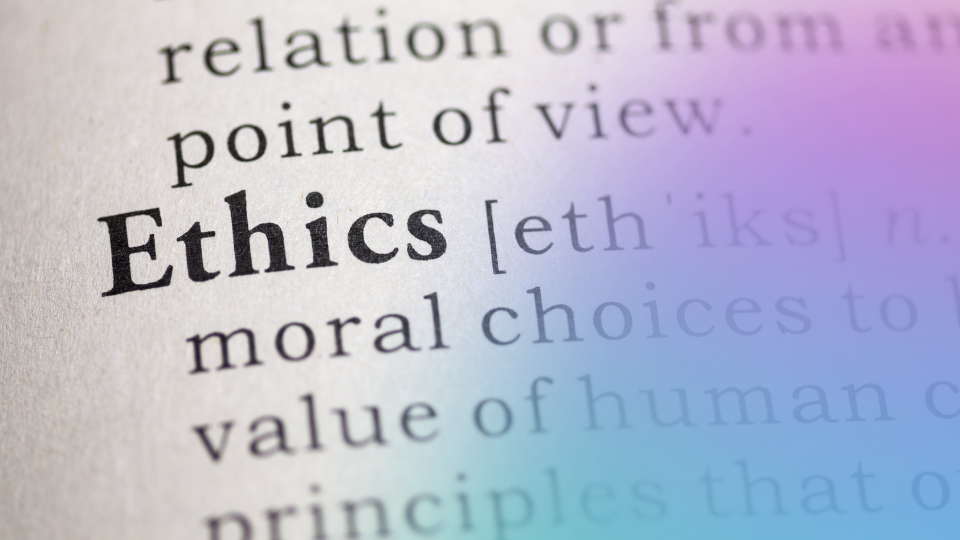Using non-inclusive language in the workplace can come with big economic and financial consequences for leaders and organizations. Paypal says it will no longer sponsor Phoenix Suns if Sarver remains the team’s owner.
Racist and sexist language are key in this case
If you follow the sports news like many Americans and global fans of the NBA and WNBA do, you probably know that Suns and Mercury majority owner Robert Sarver had a pretty bad week. His prolific use of racist and sexist language in the workplace (examples quoted below) led to the NBA fining Sarver $10 million and suspended him from any activity at the NBA for one year.
As strong as that punishment was, many felt it didn’t go far enough. Los Angeles Clippers owner, Donald Sterling, for example, was banned for life after his racist comments became public in 2014. Many voices are demanding Sarver, too, should receive a lifetime ban. Paypal, a Phoenix Suns sponsor, agrees. Paypal says they will no continue their Phoenix Suns sponsorship if Sarver remains owner. That’s no idle threat. The contract between the Phoenix Suns and Paypal was worth $3 million for the 2021-2022 season alone.
We took away four key conclusions from Sarver’s non-inclusive language affair:
Executive language shapes organizational culture
Sarver’s story perfectly illustrates how powerful language can be in shaping an organization’s culture. As human beings, language is our primary tool for expressing inner beliefs and philosophies. Language also conveys unconscious biases, or the biases we’ve internalized as part of our upbringing and socialization. While Sarver reminded investigators of his personal and professional efforts to promote diversity, equity, and inclusion, they were unfazed by his self-reported good deeds. It didn’t take investigators long to uncover that disrespectful communication was rife within the organization.
The reality was that Sarver’s words influenced how the Phoenix Suns organization communicated internally on a daily basis. In fact, Sarver’s use of non-inclusive language seems to have played an important role in shaping the Suns culture.
That’s the tricky thing about language. Intent shines through, whether you expect it to or not. While Sarver was convinced that he was doing what was necessary to promote diversity, equality, and inclusion, his language, words, and comments signaled otherwise. While we, unfortunately, do not have the possibility to access all documents found by the investigators, we know that his language was racist and sexist. In particular, we know through the press that:
- he used the N-word at least five times in front of his employees
- he said he “hate[d] diversity,”
- he told a female employee “you’ve never seen anything this big” before preparing for a shower at the team facility
These are just a few and the most obvious example of his communication. And, as investigators found, this kind of communication also was common elsewhere in the organization. Thus, his communication contributed to a toxic workplace culture that created an unwelcome atmosphere for many of the organization’s employees.
Boards now act decisively when executives misspeak
In the last few years, your career as a top executive is more likely to end abruptly due to the use of non-inclusive language than for failing financially. Partners, customers, and board members often figure out ways to tolerate and rationalize unsuccessful business decisions: The economy is volatile; executive decisions are only as good as available data; or the CEO inherited an unfixable situation. But the board can no longer ignore it when the CEO makes non-inclusive comments, regardless of whether the comments are in public or private and later revealed. (A good example is the story of Crossfit CEO Greg Glassman.)
Partners, sponsors, and vendors know they too will be viewed accountable by their own stakeholders and must act fast to minimize the collateral damage and protect their own reputations. Board members, for example, have a fiduciary responsibility to protect the company’s best interests and that can--and often does--trump their relationship with the CEO. Social movements like BlackLivesMatter, #meToo, and the LGBTQIA+ undoubtedly will make their voices heard.
As customers, employees, and advocates, they watch closely how brands and their representatives behave. Any company that ignores discriminatory language used by C-suite executives or condones toxic internal interactions is jeopardizing its reputation and customer relationships. (A good exmple is the story of Uber where a sexist culture was revealed in 2017 by employees. The CEO and Co-founder as well as 20 other employees were fired that same year. In 2019, after investigations, Uber agreed to a settlement and constituted a fund of $4.4 million to pay current and former employees.)
When companies and their executives fail to upload standards of inclusiveness in their communication, they can expect swift public retribution. We’ve seen a dramatic rise in responses and stakeholder action when misconduct becomes public knowledge. Doing nothing has become extremely costly for companies.
The type of reaction to inappropriate language that we are seeing in the US has not quite made it to Europe in any meaningful way yet. Still, the voices of EU customers, employees, and advocates are becoming louder. It’s only a matter of time before the first C-level European executive is forced to pack their desk after a display of non-inclusive language and/or behavior.
LinkedIn audiences in the DACH region got their first taste of this three weeks ago. The incident occurred when a Board Member and Chief Human Resources Officer of Trumpf, one of the world's largest machine tool makers, publicly professed in a LinkedIn post that he personally wants to retain the freedom to use non-inclusive language. Oliver Maaseen went as far as explicitly mentioning one of the discriminatory words in his post.
The reactions among LinkedIn audiences against such discriminatory language were strong. Not least because Europe, like the US, is growing more diverse, and advocacy among customers and employees is gaining momentum. Amazingly, the Trumpf board has neither reprimanded nor punished Maassen at the time of the publishing of this article. While Maassen did have to issue a public apology, he did so unapologetically, sticking to his original argument. But anyone who is following the trends in the US can predict with a high level of certainty that European boards won't accept such undiscerning language and behavior for much longer.
Language makes bias transparent
Language is an expression of a culture. It makes culture tangible. The language we read or hear in an organization gives us a taste of the culture we can expect to encounter in that very organization. Would you want to work in an organization where leadership uses the N-word, like Sarver, or sees the word “N-kuss” as an expression of their personal freedom, like Maassen? Do you as a customer want to buy from these brands?
You might be tempted to think, “Well, it’s just words.” The reality is these examples of non-inclusive language are not “just words”. Discriminatory words express a person’s belief that they‘re “above others.” Discriminatory words demonstrate that a person feels entitled to act how they want while ignoring the impact of their words on others.
They also expose inner belief systems that show up in other critical work-related matters, such as promotion, hiring, and compensation. Fundamentally, non-inclusive language ignores the fact that the world has changed and is increasingly diverse.
It’s essential to note that people often use language without realizing it could be discriminatory. All of us are socialized in a certain way. None of us consciously chooses our socialization; we’re born into it. Socialization creates unconscious biases, and these biases shape our language. So, yes, it happens. We can find ourselves slipping into discriminatory language patterns despite our best intentions to avoid such language.
We observe many such unconscious biases slip into our language and especially business language, often without us realizing it. Let me give you a few examples:
- If we refer to the “user” only with the pronoun “he” (like when writing user stories for the development team), we enforce the concept of only men being users of digital tools. We mentally ignore the fact that women and non-binary persons use these tools too or may even be the main target group.
- Using the word “black list”, while etymologically not being related to race, we connote the color “black” as negative, making it a racist-critical term. A simple alternative is “deny list”.
- The word “idiotic” relates back to a clinical term. In the former very discriminatory psychological classification system, people with undiagnosed cognitive disability were compared to two year olds. So, if you call a business decision “idiotic”, you make that hurtful history of mental health coming back. Just use “lacks understanding” or “ignorant”.
There are many, many others such hidden biases in language in all diversity dimensions. And to use such wording happens to all of us, without us wanting to do it.
But here’s the thing: Whether non-inclusive language becomes an issue depends on how the user and the community reacts when it happens. Don’t give yourself an easy pass. Don’t say you didn’t know and expect life to go on. Your reaction counts. Listen to those you’ve offended, learn from their perspective, and try to do better next time.
We can’t be perfect, nor can we know completely how language is evolving. But we can listen, educate ourselves, and take ownership for what we say.
Hall-of-Fame NBA player Tim Hardaway is a useful example. Hardaway’s handling of a difficult non-inclusive language situation * illustrated how an offender can learn, grow, and recover. He understood that his upbringing had socialized him to be homophobic and use homophobic language. Hardaway, however, realized that it was on him to change and learn. He is now an outspoken advocate of the LGBTQIA+ community in Florida.
Language is a means for investigators
Finally, language is where it all ends. Let me repeat, language makes culture tangible. When discrimination accusations are leveled against a company, investigators have to, well, investigate. How do they do it? They search for clues in written text, such as text messages, emails, and other company documents. Then, they corroborate their findings with testimonials. Or the other way around. In either case, written language is the key to proving whether a workplace culture is – or isn’t – inclusive. Court decisions are based, in part, on written words or tangible evidence left behind by the accused parties.
Use language as a tool to build inclusive cultures
Language is vital. It’s symptomatic of the culture that uses it. Language is an agent shaping culture. And, it can be weaponized to turn environments toxic.
Imagine a person talking aggressively to their team over several minutes or even hours. Will the aggressive tone wash over team members and leave them unaffected? I’m sure we’ve all experienced this effect in a public space, private life, or work environment. An aggressive tone or message makes us more aggressive. We tend to mirror the emotions that come with words. The team members in our example are likely to be more aggressive in their interactions and communications with others, team members, and even customers. Dana Kanze, a researcher from London Business School, found that the words you use in a company's mission statement determines the discrimination at the workplace. So-called "locomotion" language motivates discriminatory decisions (see below).
Our capacity to mirror emotions means we can also use language for good. Language can make us more empathetic. It can make people aware of hidden biases and discrimination. When certain words are highlighted, we can learn why they’re biased or discriminatory – even when they hide in sayings and phrases. We can learn about the history behind words. We can understand why people with other backgrounds might read words differently based on their socialization, cultural perspectives, and lived reality. Using our newly acquired insights in everyday communications makes us more inclusive – in our personal behavior and organizational culture.
It can be tricky to detect where biases hide in our language. Again, our own socialization often prevents us from seeing bias. That’s why we’ve developed Witty, a digital writing assistant that helps you detect hidden biases in language. By raising awareness and offering actionable suggestions, Witty supports organizations and their employees’ efforts to build and foster diversity and inclusion.
It could have saved Mr. Sarver tens of millions of dollars and--something perhaps even more valuable--his reputation and career as an NBA and WNBA owner. ;)
If you are looking for a digital writing assistant for inclusive language, try out Witty for free. Witty detects non-inclusive language and provides ongoing training on unconscious bias and operationalizes inclusion.
-----
Some Sarver quotes:
“Among other
things, the league’s investigation found that Sarver
used the N-word at least five times in front of his
employees, said he “hate[d] diversity,” told a
female employee “you’ve never seen anything this
big” before preparing for a shower at the team
facility, and “exposed his genitals to a male
employee who was on his knees in front of Sarver
performing a fitness check.”
From: "Robert Sarver is a problem bigger than the NBA wants to handle", Andscape, by Martenzie Johnson
---
About the Hardaway case:
In an interview with CBS in 2013, he said "I hate gay people." without any inhibition, after the announcement of a former NBA play John Amaechi that he is gay.) Read more here: https://www.outsports.com/2013/2/20/4009780/tim-hardaway-says-i-hate-gay-people
---
Study by Dana Kanze: "The motivation of mission statements: How regulatory mode influences workplace discrimination", https://www.sciencedirect.com/science/article/pii/S0749597818301092?via%3Dihub
From abstract: "Discriminatory behavior is associated with franchises whose mission statements motivate employees to embrace urgent action (locomotion mode) over thoughtful consideration (assessment mode). Two experiments demonstrate that participants exposed to high locomotion mission statements tend to disregard ethical standards due to their need for expediency, making significantly more discriminatory managerial decisions than those exposed to high assessment mission statements."





